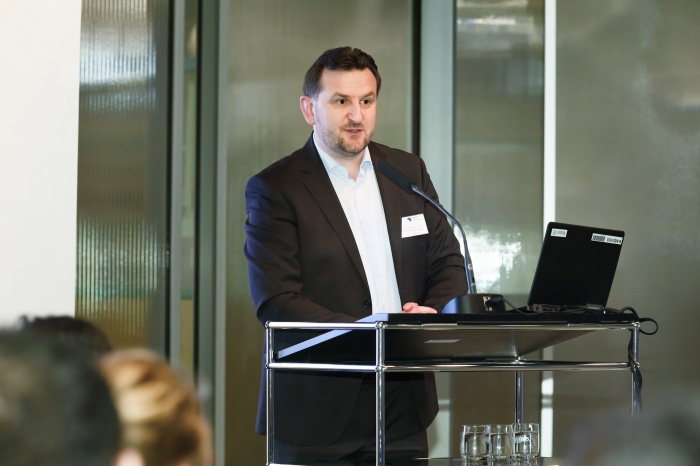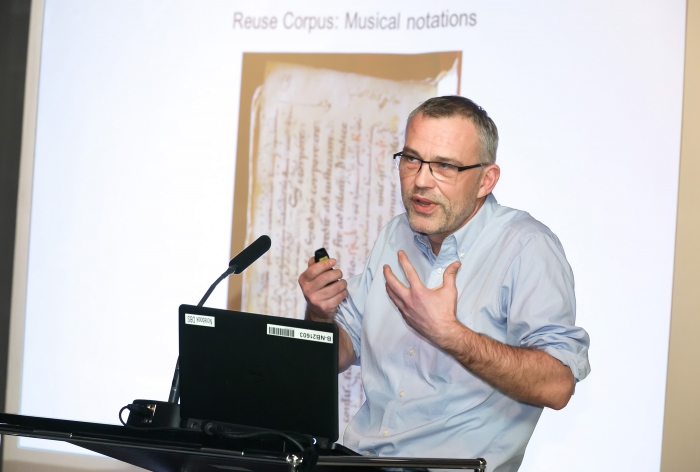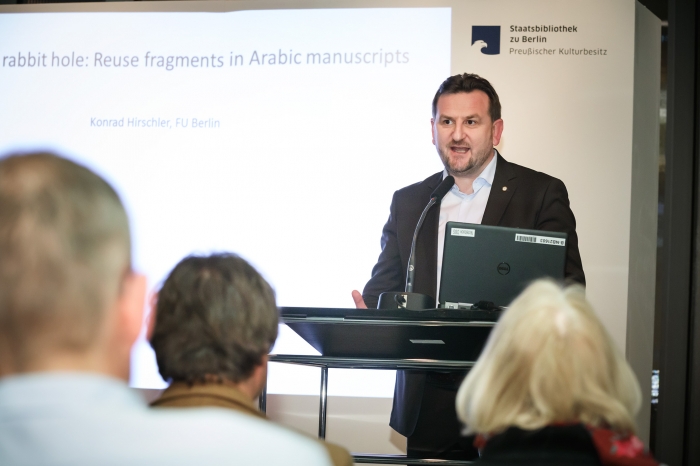“Reuse Fragments in Arabic Manuscripts”, lecture by Prof. Konrad Hirschler
In the margins of the International Training Course on: “Codicological and Palaeographical Aspects of Islamic Manuscripts, with a Special Focus on Manuscript Notes”, which took place from 25th until 29thMarch 2019, at Staatsbibliothek zu Berlin, Germany, which was organised by the Centre for the Study of Islamic Manuscripts at Al-Furqān Islamic Heritage Foundation, in co-operation with the Staatsbibliothek zu Berlin and the Freie Universität Berlin, on Monday 25thMarch 2019, and in order to provide a platform for the wider audience who are interested in the Islamic heritage and culture, the three institutions organised a public lecture under the title “Reuse Fragments in Arabic Manuscripts”, delivered by Prof. Konrad Hirschler, lecturer at the Institute of Islamic Studies at Freie Universität Berlin.
The event was chaired by Dr Christoph Rauch, Head of the Oriental Department of the Berlin State Library.
After the welcoming words by Dr Barbara Schneider-Kempf, Director of the Berlin State Library, and Mr Sali Shahsivari, Managing Director of Al-Furqan Islamic Heritage Foundation, the floor was given to Professor Konrad Hirschler to deliver his lecture.
In his lecture, entitled “Down the rabbit hole: Reuse Fragments in Arabic Manuscripts”, Prof. Hirschler highlighted the fact that, producers of Arabic manuscripts systematically reused fragments of discarded writings. This material included recent documentary material (such as contracts, decrees and petitions), but also material that was clearly archaic at the point when it was reused.
Furthermore, he presented samples of reuse practices in manuscripts produced in the Syrian and Egyptian lands during the Middle Period, especially the twelfth and thirteenth centuries. The samples showed that manuscript producers systematically had recourse to fragments that referred to different pasts in terms of materiality (parchment in a manuscript tradition that since long had transitioned to paper), of script (ancient Maghribi script that was entirely alien to the local manuscript cultures) and of language (such as Hebrew, Syriac and Georgian). Producers built these striking spolia into their new books in highly visible ways; they generally functioned as title pages and they were the first item a reader would encounter when picking up the book. The subsequent trajectories of the new books, that in turn underwent material modifications, show that, in the following centuries, users took these spolia seriously and preserved the antiquarian fragments in often surprising ways.
After the lecturer concluded his presentation, extensive discussion ensued, with important questions posed on those topics raised in the lecture.







